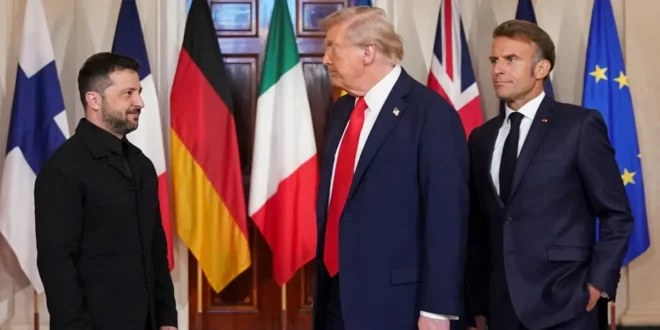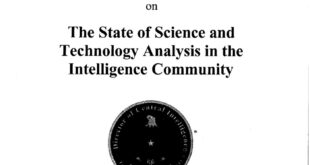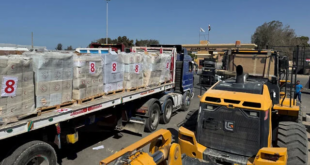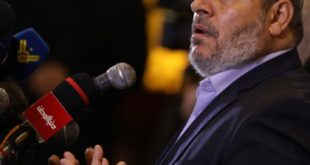For almost everyone involved, the diplomacy around ending the war in Ukraine seems to be an exercise in faking it till they make it. Russian President Vladimir Putin is pretending he wants peace. U.S. President Donald Trump is riding along with him, pretending (or perhaps truly thinking) that Putin is sincere. Ukrainian President Volodymyr Zelensky is pretending he believes Trump, as are leaders in Europe. The summits in Alaska and Washington reflected this, generating lots of noise without any breakthroughs. Call it the fog of diplomacy.
Still, it would be a mistake to say the gatherings accomplished nothing. In fact, every leader in attendance walked away with some sort of achievement. By traveling to Alaska, Putin placated Trump, who was growing exasperated with the Russian leader, and lived out his long-held fantasy of meeting with a U.S. president and carving up part of Europe. Trump, meanwhile, used the Alaska meeting to free himself from domestic pressure to impose harsh sanctions on Russian oil or to take other forceful measures. In Washington, Ukraine and Europe received promises that Trump would continue selling arms to Ukraine and demonstrated that they have seats at the negotiating table. Trump, for his part, reassured critics that he was not cutting a deal with Putin behind the backs of his NATO allies.
But although the summits mark a departure from Trump’s early strategy—when Ukraine and Europe received only sticks, and Russia only carrots—the president is mercurial. He has repeatedly expressed admiration for powerful dictatorships and endorsed the idea that, in international relations, strong countries should do as they like. Trump doesn’t even think he needs to listen to Putin, although Russia’s president also believes that the weak must submit to the will of the great. As the talks continue, Trump could flip back to threatening Kyiv and Europe.
But no matter how many times Putin and Trump speak, and no matter what they do, Ukrainians are strong enough to avoid having their future dictated to them. Kyiv is not opposed to a negotiated settlement, as Trump occasionally suggests. But unless it is abandoned by Europe and experiences a domestic collapse, Ukraine will not surrender. To become a great peacemaker, Trump will thus have to better understand what Kyiv requires before the country puts down its weapons.
SAFETY FIRST
After years of broken promises by Moscow, Kyiv is not going to sign on to a peace deal it does not think will last. Trump seems to comprehend at least this much and has thus expressed openness to playing a role in providing so-called security guarantees for Ukraine. He even hinted that Washington could help offer “NATO-like” protections for the state.
But when it comes to security guarantees, the devil is in the details. And there should be no delusions: the distance between NATO itself and “NATO-like” protections is vast. Today, at least, Ukraine’s partners are extremely unlikely to fight on behalf of Kyiv (as they would if a NATO country were attacked). All they can really provide, then, is more weapons, continuity of supply, and membership in the European Union. In other words, the best they can do is not deprive Ukraine of what it is already getting.
EU admission is particularly crucial, as it would make Ukraine a full-fledged member of the West. To arm Ukraine without bringing it into the EU would mean preserving Putin’s hope of one day dragging it back into his sphere of influence. Europe, of course, is mostly responsible for Kyiv’s accession. But Washington is also essential to the process. Trump may be the only person capable of swaying Hungarian Prime Minister Viktor Orban, who is friendly with Putin, to stop blocking the body from advancing Ukraine’s integration.
As part of any talks, Putin will try to prevent Ukraine from receiving meaningful security assurances. Russian Foreign Minister Sergey Lavrov, for instance, has already made the absurd demand that Russia be part of Ukraine’s security arrangements. To do so, he invoked the 1994 Budapest Memorandum, in which London, Moscow, and Washington all agreed to respect Ukraine’s sovereignty and protect it from attacks in exchange for Kyiv giving up its nuclear weapons. Ukrainians will never accept a redux of that deal. Yet by putting forward this proposal, Moscow has given itself vast room for maneuver and endless discussions.
LAY OF THE LAND
The next issue facing negotiators is about the mechanics of stopping the conflict. At first, the U.S. proposed a temporary cease-fire. Ukraine and its European partners agreed. Putin, however, called for going straight to a permanent peace deal. The U.S. president is fascinated by the idea of a complete end to the war—a truly big and beautiful achievement—and so it is no surprise that, after meeting with Putin, he adopted Russia’s stance.
But Moscow’s proposal is a trap. Bringing the war to a full conclusion requires far more time and concessions than does arranging a cease-fire. More time, however, is exactly what Putin is after. Every week absorbed by choreography and communiqués is a week in which Russian forces seize more Ukrainian territory and kill more civilians. Continued talks would also stave off American decisions that could hurt the Kremlin—such as tougher secondary sanctions on Russian oil businesses.
Putin’s talk of addressing “the root causes of the conflict” is also a stalling tactic. The Kremlin likes to say the root cause is Ukraine’s aspiration to join NATO. But as Putin has made clear time and again, the real root cause is Ukraine’s very existence. “All of Ukraine is ours,” Putin said in June—a sentiment he has repeatedly expressed since the war began. To end the conflict, Putin will have to change his tune and accept Ukraine as a sovereign EU nation capable of defending itself. Trump will have to accept Ukraine’s right to sovereignty as an indispensable element of the deal, changing Moscow’s approach by using coercion and encouragement.
Putin is a master at creating grinding negotiations.If Russia is willing to accept Ukraine’s independence, there are ways the two states can strike some sort of bargain. Consider, for example, the issue of the land Moscow demands. There is a workable interim approach to this seemingly intractable problem: leave its status in a gray zone that allows both sides to claim it as theirs. This kind of understanding has worked well elsewhere. Beijing and Taipei, for example, have avoided a war over Taiwan by both claiming they are the rightful government of all of China, which lets the former maintain that the island and the mainland remain one.
But they did not adopt this formulation on their own. It was introduced by U.S. Secretary of State Henry Kissinger. And it has endured for more than 50 years because the United States consistently strengthens Taiwan and compels China to postpone a final settlement. For a similar deal to work in eastern Europe, Washington would need to do the same with Ukraine and Russia, respectively.
Instead, Trump has regrettably adopted Putin’s talk of a “land swap” in which Ukraine would formally cede territory to the Kremlin. It is the equivalent of asking someone whose car and bicycle were just stolen to strike a deal with their robber in which the thief returns the bicycle if the victim agrees to give up on trying to recover the car. For Ukrainians, this is completely unacceptable, just as it would be for any other nation. It is against the country’s laws, and even if it weren’t, such an agreement would prompt mass domestic unrest, toppling whatever government signed it and throwing Ukraine into chaos. The sooner the phrase “land swap” is excluded from Trump’s vocabulary, the better for Washington’s peacemaking efforts.
WASTING TIME
In pursuit of a grand bargain, Trump has proposed a summit with both Putin and Zelensky. Such a meeting would be a significant event. It would not guarantee the end of the war, but it would be difficult for the two leaders to walk away without at least coming up with some sort of steps toward an agreement.
Zelensky is aware that a summit with Putin could help hasten a deal. As a result, he has endorsed direct talks with Putin since 2022. The Kremlin, however, has not signed on. When asked about Trump’s proposal, Putin’s aides have demurred, claiming that any summit with Zelensky would need to be “gradually” prepared. If Putin avoids a meeting under various pretexts, it will be yet more confirmation that he is merely stalling for time, holding Trump back from decisive action while driving a wedge between Trump and Europe’s leaders.
No one should be surprised by such an outcome. Russia’s president is a master at creating grinding negotiations. Even if fully launched, talks between Kyiv and Moscow could drag on forever. As a Soviet Cold War–era joke once put it: “There will be no war, but the struggle for peace will leave not a single stone standing.”
The war, then, will likely rage on. Russia’s motivations have not changed, and it still has the strength to attack, although its widely advertised summer offensive did not produce significant gains. Ukraine still has the capacity to fight back, and it will not lay down its arms until it can be sure its independence is properly safeguarded.
Europe is helping the country by increasing military aid, although it must pick up the pace. But on the whole, the world is not yet giving Kyiv the support it needs to contemplate a deal. Diplomats can profess that they are making progress. Yet no statement, summit, or social media post can substitute for actually understanding Ukraine’s demands—and creating a strategy that meets them.
 Eurasia Press & News
Eurasia Press & News




